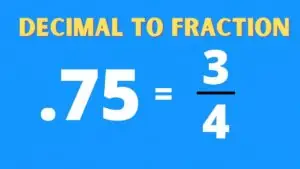Mathematics is a broad field, encompassing a multitude of concepts and principles. One such fundamental concept is the idea of a ‘root.’ A root in mathematics is a solution to a specific kind of equation, known as a polynomial equation. To fully grasp the depth and implications of this idea, let’s break it down further.

✅ AI Essay Writer ✅ AI Detector ✅ Plagchecker ✅ Paraphraser
✅ Summarizer ✅ Citation Generator
What is a Root in Mathematics?
In mathematics, the term ‘root’ signifies a number that solves or satisfies a given equation. In more specific terms, a root is a number that, when substituted for the variable in an equation, turns the equation into a true statement. For instance, if we consider the simple algebraic equation x – 3 = 0, the root is the value of x that makes the equation true. Here, the root is x = 3.
Root and Its Relation to Polynomial Equations
Roots are most commonly associated with polynomial equations. A polynomial is a mathematical expression involving a sum of powers in one or more variables multiplied by coefficients. When it comes to finding roots of a polynomial, we are essentially looking for the values that make the polynomial equal to zero.
Nth Roots and the Concept of Principal Root
In addition to simple roots, mathematics also features more complex roots, referred to as ‘nth roots.’ An nth root of a number x, is a value that, when raised to the power of n, gives x. For instance, the square root (n=2) of 4 is 2 because 2^2 equals 4. Similarly, the cube root (n=3) of 8 is 2 because 2^3 equals 8.
Each positive real number has two nth roots, one positive and the other negative, except when n is 2 (square root), where we only consider the positive root, known as the principal root.
Complex Numbers and Roots of Unity
The notion of roots extends beyond the realm of real numbers and into the complex plane. Complex numbers consist of a real and an imaginary component, and they can also serve as roots to certain equations.
A fascinating concept related to complex roots is the nth roots of unity. The nth roots of unity are the solutions to the equation z^n = 1, where n is a positive integer, and z is a complex number. These roots have profound implications, not just in pure mathematics, but also in fields like signal processing and data analysis.
Final Thoughts
In summary, roots are a core concept in mathematics, underpinning fundamental aspects of algebraic equations, polynomials, and complex number theory. They are essential to solving equations and understanding the inherent patterns within mathematical structures. Like many other concepts such as a coefficient in Math, the idea of a root is simple at the basic level but can be expanded to accommodate more complex scenarios and numbers, providing a wide array of applications and deepening our understanding of the mathematical world.
FAQ
Are complex numbers considered roots?
Yes, complex numbers can indeed be roots. In fact, in the field of complex numbers, every non-zero number has exactly n different nth roots. The concept of complex roots is particularly important when solving polynomial equations which may not have real roots. For example, the equation x² + 1 = 0 has no real solutions, but it does have two complex solutions: x = i and x = -i.
What is the principal root of a number?
The principal root of a number refers to the positive root of a number. For example, if we consider the square root of 4, both -2 and 2 are technically square roots since (-2)² = 4 and 2² = 4. However, by convention, the principal square root is defined to be the non-negative root, so the square root of 4 is defined to be 2, not -2.
Can irrational numbers be roots?
Absolutely! Irrational numbers can be roots of equations. A good example is the square root of 2, which is an irrational number. It is the root of the equation x² – 2 = 0.
How do roots relate to polynomial equations?
Roots are integral to understanding polynomial equations. A root or zero of a polynomial is a number that, when substituted into the polynomial, makes the equation equal to zero. For example, if we consider the polynomial x² – 5x + 6, the roots are 2 and 3 because substituting these numbers into the polynomial results in zero. The Fundamental Theorem of Algebra states that a polynomial of degree n has exactly n roots, although some of these may be repeated or complex.
What is the significance of finding roots in math?
Roots play a vital role in many areas of mathematics and its applications. They are critical in solving equations, analyzing functions, and graphing polynomials. The roots of a function correspond to the x-intercepts of its graph, revealing important information about the behavior of the function. In physics and engineering, finding roots of equations can represent important properties of physical systems.
How to approximate roots using numerical methods?
When you can’t calculate roots exactly, you can use several numerical methods to approximate them. One of these is the Bisection Method, which works by cutting the interval into two parts and choosing the one that includes the root. This process gets repeated until you reach the level of precision you want. Another method is Newton’s Method. It uses tangents to the function to get close to the root. It starts with an initial guess and then repeats a formula (x₁ = x₀ – f(x₀)/f'(x₀)) to get closer to the root. The Secant Method is similar to Newton’s method, but it doesn’t need the derivative of the function. Instead of a tangent line, it uses a secant line.
What are common misconceptions about roots in math?
People often have some misunderstandings about roots. For example, they might think all roots are real numbers. That’s not true, as roots can be real, complex, or even irrational numbers. Another misconception is that negative numbers don’t have square roots. While this is true in the real number system, it’s not in the complex number system. There, negative numbers do have square roots. For instance, the square root of -1 is the imaginary unit i. Finally, some people believe every equation only has one root. This is also not true. The degree of the polynomial equation generally tells us the number of roots it has. So, a quadratic equation has two roots, a cubic equation has three, and so on. These roots can be different or repeated, and they can be real or complex.
Follow us on Reddit for more insights and updates.





Comments (0)
Welcome to A*Help comments!
We’re all about debate and discussion at A*Help.
We value the diverse opinions of users, so you may find points of view that you don’t agree with. And that’s cool. However, there are certain things we’re not OK with: attempts to manipulate our data in any way, for example, or the posting of discriminative, offensive, hateful, or disparaging material.